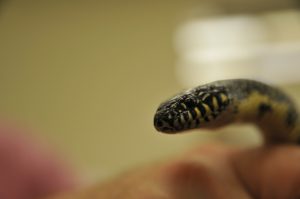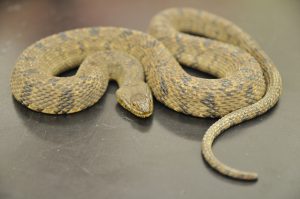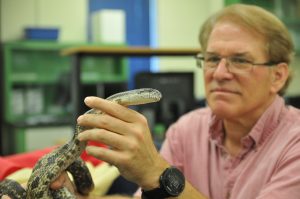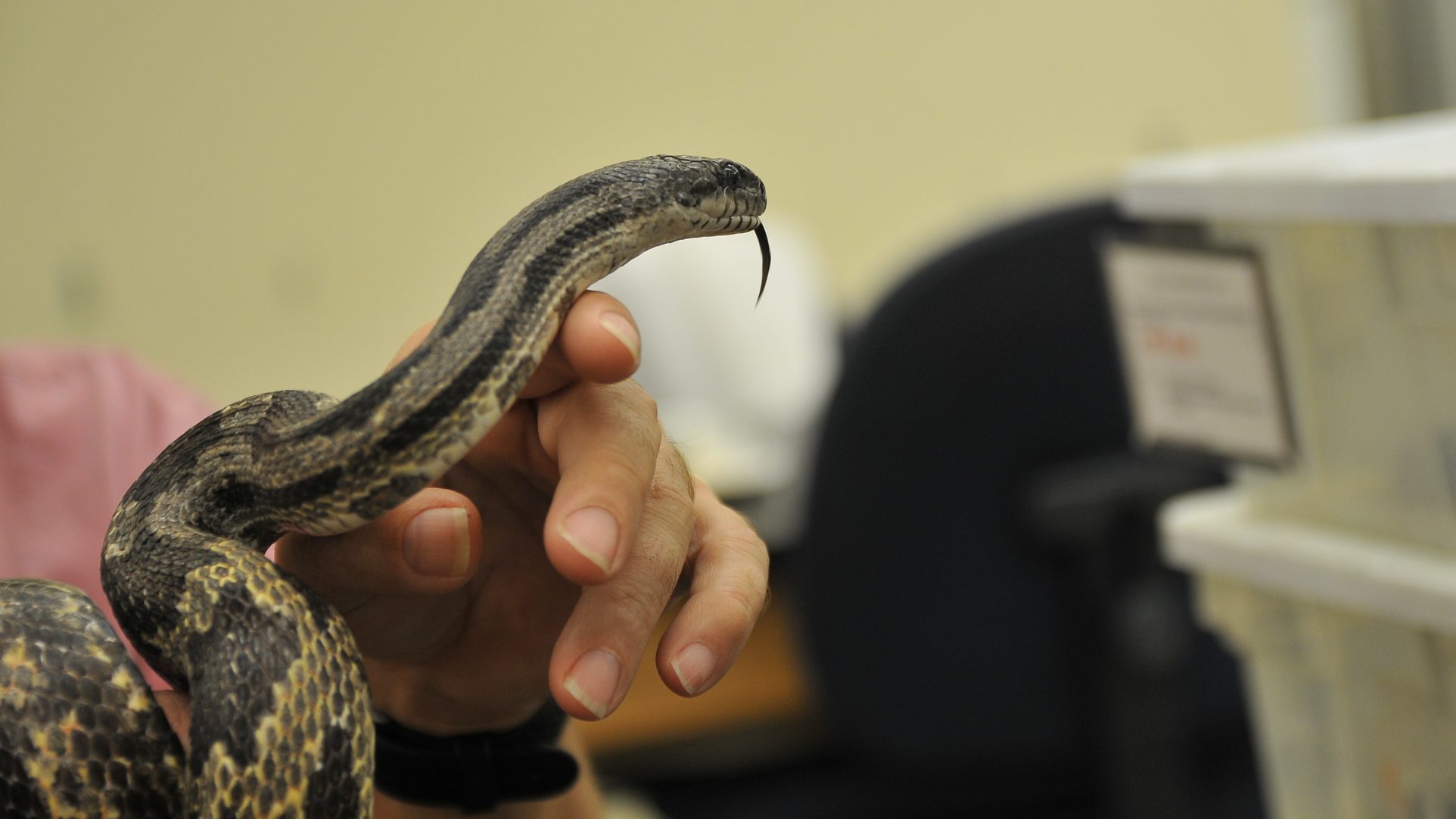
TUSCALOOSA, Ala. — It’s hot, and hibernation is over.
Alabama’s 40-50 snake species are now on the loose looking for food and mates during their most active period of the year – spring to early summer.
Fortunately for Alabamians, there aren’t many venomous serpents in the Yellowhammer State, but several of them are common, and close encounters with them should be avoided when possible.
“Snakes become active right after things start to warm up, which is when people encounter them,” said Dr. Stephen Secor, a UA biology professor and comparative physiologist whose concentration is snakes. “The end of March, April and May they’re very active, but they become nocturnal as we get into June because it’s too warm during the day.
“People encounter snakes in a lot of different ways … at home in the rafters of their garage or barn, in their gardens, while walking on trails in wooded areas. Most snakes encountered here are rat snakes, which are very common and aren’t venomous, but the state’s six venomous snakes may also be encountered.”
Secor said the state’s six venomous snakes are copperheads, coral snakes, water moccasins/cottonmouths, pigmy rattlesnakes, timber rattlesnakes and eastern diamondback rattlesnakes.
Besides specific identifying marks common to each venomous species, a general way to tell if a snake is venomous is by looking at its eyes – don’t be concerned with rumors of being hypnotized. If a snake has an elliptical – vertical slit – pupil, it’s venomous. If it has a round pupil, it isn’t, except for coral snakes, which shares the round pupils of nonvenomous snakes.

Of the six venomous serpents, the often well-camouflaged copperhead is the most common, the diamondback rattlesnake is the largest and most dangerous and the colorful coral snake is the rarest, but it has the strongest venom toxicity.
Scarlet king snakes, which are nonvenomous and eat other snakes, may be mistaken for coral snakes because they both have black, yellow and red banded stripes. Secor said to tell the difference, remember the popular rhyme: “If red touches yellow, kill a fellow. Red touches black, friend of Jack.”
“Finding a coral snake is a once or twice-in-a-lifetime event,” he said. “Water moccasins are going to be in or near bodies of water – swamps, ponds, wooded streams. But out on the trail the most common venomous snakes will be copperheads and timber rattlesnakes.”
Avoiding the Fangs
Coral snake venom is a powerful neurotoxin that impacts the nerves, while cottonmouth, copperhead and rattlesnake venom is a strong cocktail of enzymes that break down tissues.
Secor said getting bit by a venomous snake in Alabama is unlikely and can be easily avoided as long as a person doesn’t get within striking range of them, which is usually half the snake’s body length or within three to four feet just to be sure.

“Copperheads and timber rattlesnakes will hold their ground, coil up, and, if you bother them, they may defend themselves or slither off,” he said. “Just steer around them. They’re not going to come after you.
“In most cases where people and snakes occupy the same space, people do not know the snakes are there. For every snake you see, there’s probably another five you do not see.”
Secor said snakes are actually docile animals, despite their bad boy reputation. They do not seek to engage with humans, and they only bite when they feel it’s their only option.
“If I just run across a rat snake out in the wild and pick it up and hold it, it’s only about 10-15 percent chance that it will bite me,” he said. “But if you go out to the Quad and try picking up one of those squirrels, it’s going to tear into you.
“There’s not too many wild animals that you can catch that are capable of biting that won’t if you pick them up.”
What to do if bitten
If a bite does occur, keep calm, and seek immediate medical assistance, Secor said.

Snake bites can be wrapped, but not tightly, and a tourniquet should never be used. Also, despite what’s shown in movies, sucking out the poison doesn’t work.
“The hospital has antivenom,” he said. “They’re going to ask you, ‘where’s the snake?’ because they want you to kill it and bring it in, but, instead of killing it, take a picture of it, and show that to them. Avoid killing snakes because they’re an important part of the ecosystem.”
If the type of snake isn’t known, venomous bites can be clearly identified by the accompaniment of intense pain and swelling. And, after about 10 minutes, the pain will become much worse.
Contact
Jamon Smith, communications, jamon.smith@ua.edu, 205-348-4956
Source
Dr. Stephen Secor, ssecor@ua.edu, 205-348-1809
